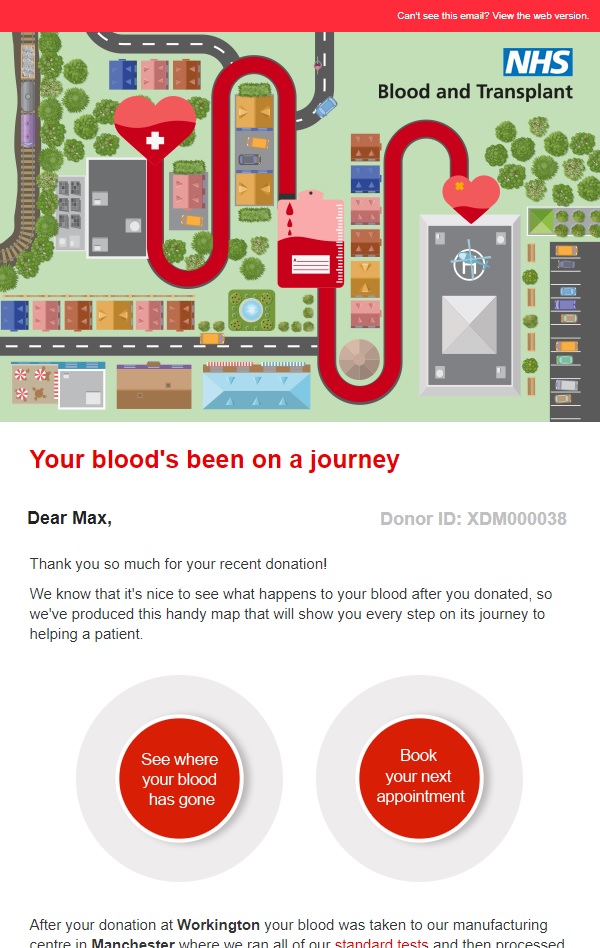Blood donors get a map showing where their blood has gone
Donors will be emailed a map that shows which hospital received their blood and where it was processed.
From this week (4 November 2019), blood donors are being sent maps of the journey their blood has taken to a hospital.
The maps are being created through Google Maps and sent out to donors via email, when their blood is issued. The maps show which hospital received the blood and where it was processed.
 NHS Blood and Transplant is sending the emails to help inspire people to keep donating. There is a particular desire to retain donors with in demand blood types such as O negative and Ro. (1)
NHS Blood and Transplant is sending the emails to help inspire people to keep donating. There is a particular desire to retain donors with in demand blood types such as O negative and Ro. (1)
NHSBT has around 820,000 donors and around 5,000 units of blood are issued to hospitals every day. Around 4,000 emails will be sent a day. (2)
Jon Latham, Assistant Director for Blood Donation, said: “People are fascinated by what happens to their blood and where it might end up.
“Donors will now get emails showing a map of the journey each donation has taken, including the hospital it is sent to, where it will help save lives.
“Blood donation keeps evolving but some things stay the same – you still get tea and biscuits and you still get an amazing feeling that you have done something life changing.”
The roadmaps will be used in addition to the popular text messages NHSBT has been sending to donors since 2017, which tell the donor which hospital their blood has been sent to. Future ambitions include being able to provide donors with a map of all the different hospitals their blood has been sent to.
Donors give blood at one of 23 permanent donor centres or at mobile sessions held for the day in community venues such as church halls.
The blood is processed at one of NHSBT’s manufacturing centres in Bristol, Manchester and Colindale in North London.
It is later delivered to a hospital, ready for transfusion into a seriously ill patient. NHSBT drivers transport most of the blood through regular deliveries and delivers some through ‘blue light’ emergency deliveries.
- Join us in saving lives at www.blood.co.uk and with the NHSGiveBlood app.
Story notes
- O negative is the universal donor type which can be given to almost anyone, making it invaluable to the emergency services. Stocks are under increasing pressure. Ro is a variation of Rh blood type. Ro is often used to save people with the rare blood disorder sickle cell disease.
- Some donors opt out of receiving emails and prefer other forms of contact, so the number of emails sent per day will be lower than the number of donations.
